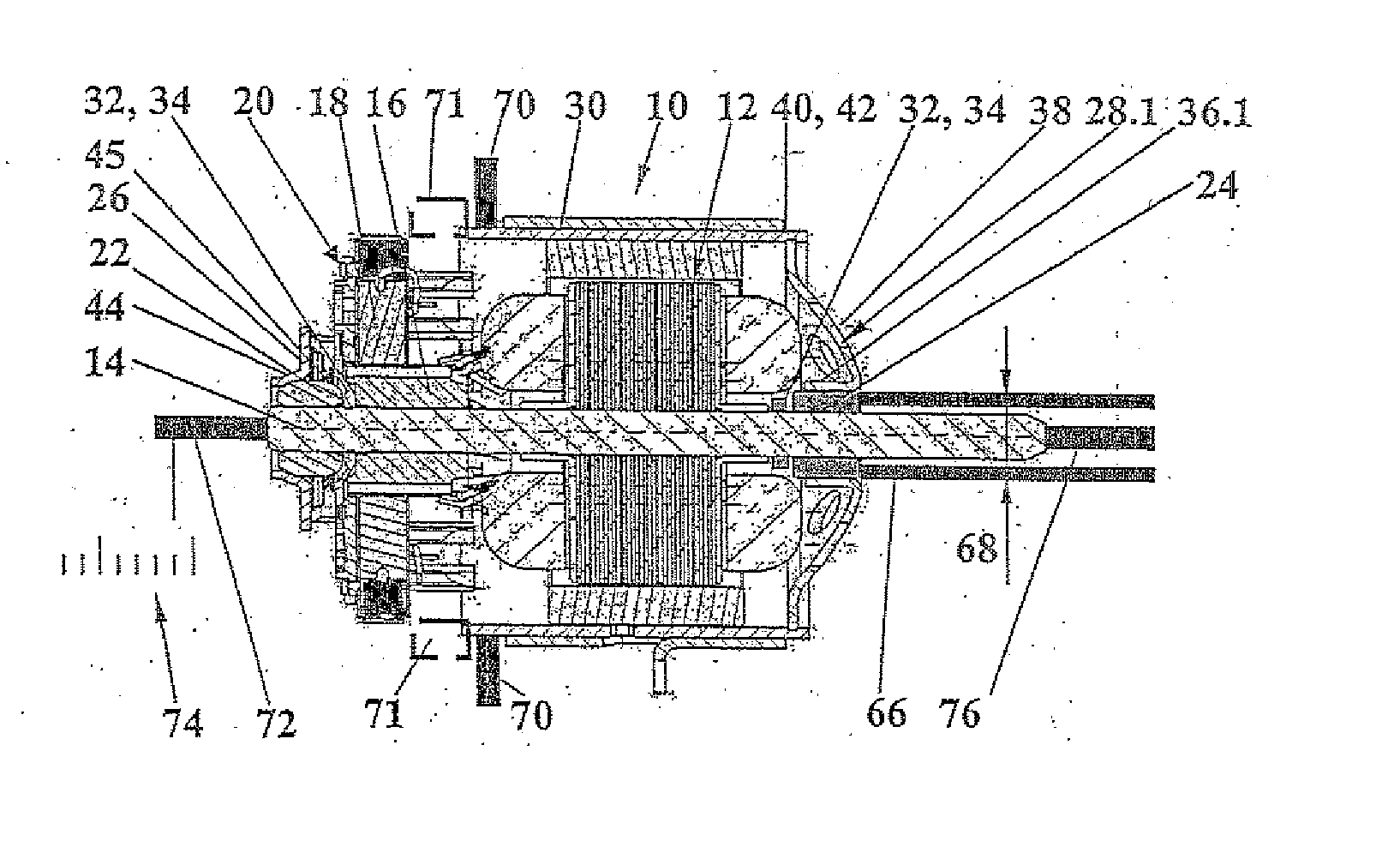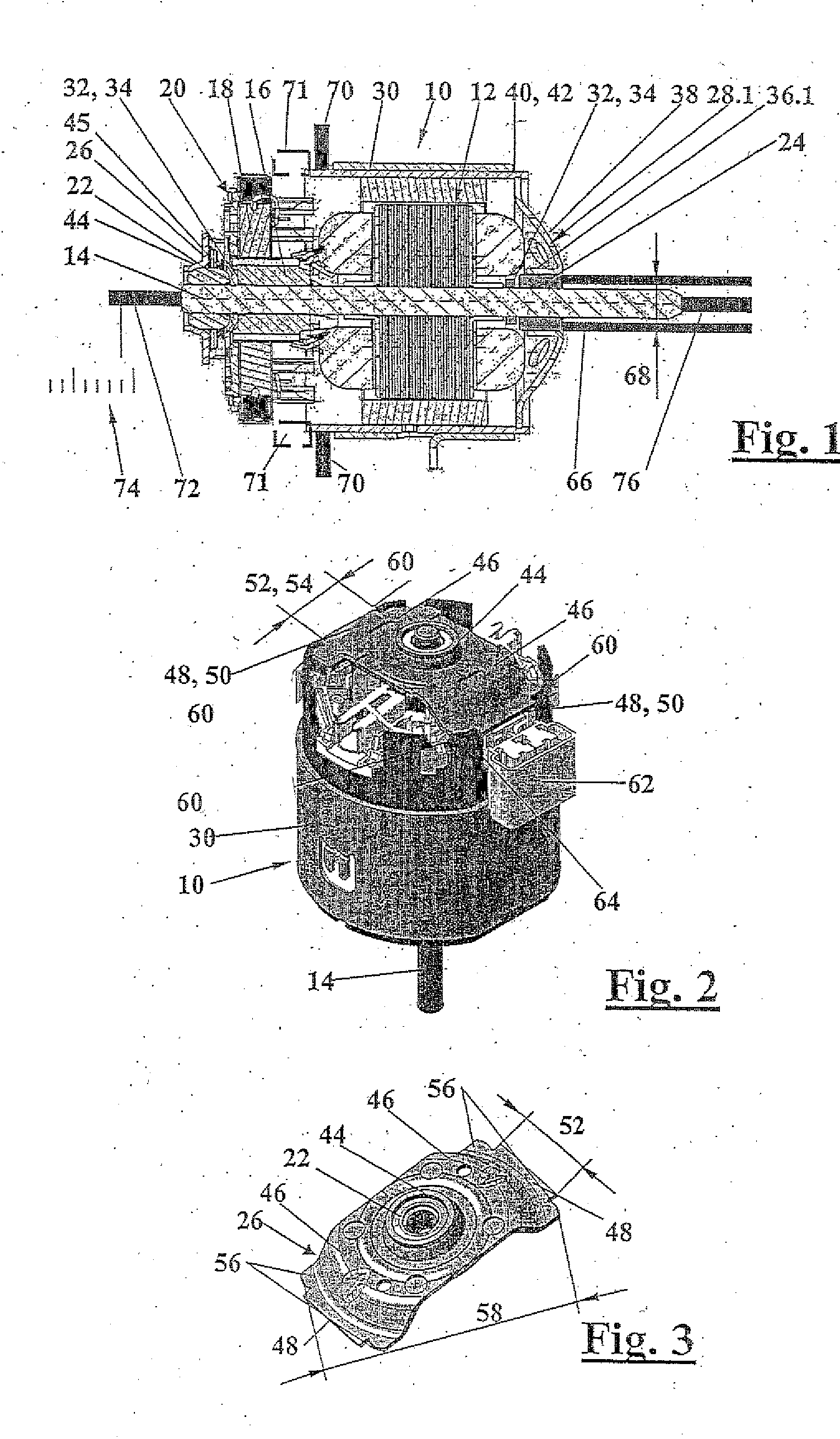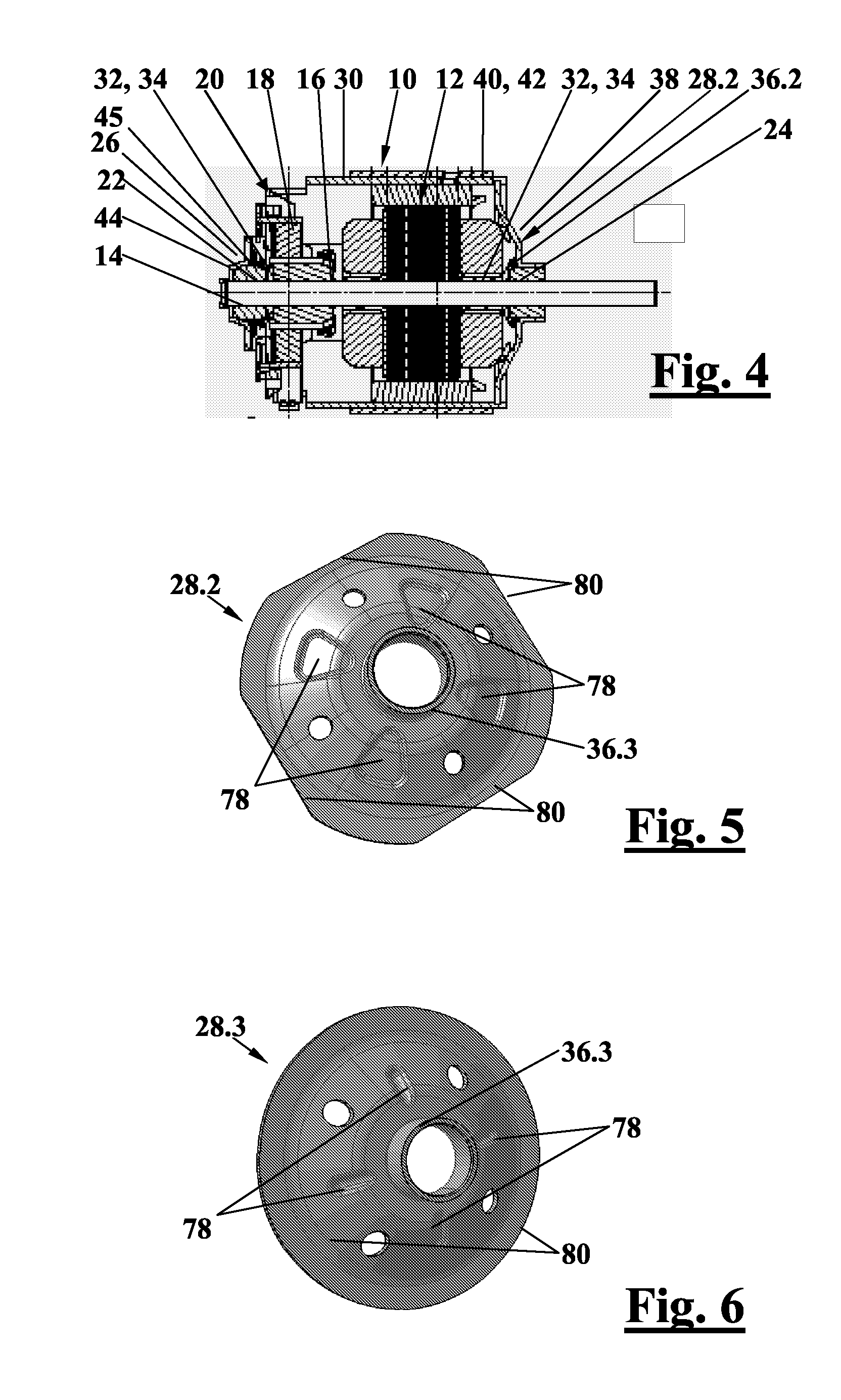[0006] Preferably, the end shield has an outer edge, which is located on, and preferably rolled into, a pole ring of the electrical machine, and the outer edge is adjoined by a curved region, which protrudes from the pole ring of the electrical machine, and the sleeve is disposed in the curved region. This provides great strength of the combination in the axial direction, with easy production. The strength in the axial direction is increased if the end shield has at least one reinforcement for increasing the
axial rigidity. Such a reinforcement can easily be produced in that at least the curved region has reinforcing beads, which preferably extend in the radial direction. Production is further simplified if the end shield a stamped and bent part.
[0007] If the sleeve protrudes into the electrical machine, then the curved region can be axially more rigid for the same height, and as a result the strength is increased. If the sleeve protrudes from the electrical machine, then the curved region can be designed more shallowly, making excellent utilization of the
available volume possible, for instance for a fan wheel.
[0010] Because a second end shield, which is diametrically opposite the end shield having the cylindrical bearing, is secured in a pole ring of the electrical machine, and the second end shield has at least two brackets, protruding from the bearing seat for the bearing; because tabs on the brackets protrude outward and are inserted into recesses in the pole ring; and because next to the tabs, diametrically opposed stops are embodied, which are disposed inside the pole ring and whose diametral spacing is less than the inside
diameter of the pole ring, so that the second end shield is supported in floating fashion before
assembly, the bearings can easily be axially aligned. The risk of rough operation is minimized.
[0015] If the bearings of the electrical machine are not aligned quite precisely, it can happen that the shaft runs roughly. To prevent this, it is proposed that after the connection of the pole ring and the end shield that has the cylindrical bearing, the shaft is put in place, and after that an end shield, which is diametrically opposite the end shield of the cylindrical bearing, is placed upon
assembly into the pole ring with radial play and is thrust onto the shaft, so that the end shield is aligned, and only then is it wedged to the pole ring.
[0010] Because a second end shield, which is diametrically opposite the end shield having the cylindrical bearing, is secured in a pole ring of the electrical machine, and the second end shield has at least two brackets, protruding from the bearing seat for the bearing; because tabs on the brackets protrude outward and are inserted into recesses in the pole ring; and because next to the tabs, diametrically opposed stops are embodied, which are disposed inside the pole ring and whose diametral spacing is less than the inside
diameter of the pole ring, so that the second end shield is supported in floating fashion before
assembly, the bearings can easily be axially aligned. The risk of rough operation is minimized.
[0011] Furthermore, a method for adjusting the axial play of the shaft of such an electrical machine is provided, in which the electrical machine is installed with an axial play that is greater than the specified axial play; the electrical machine is fixed; the shaft is pressed against one of the bearings; the shaft is then displaced in the direction of the other bearing, and the displacement distance until the shaft is pressed against the other bearing is measured; and the cylindrical bearing is pressed in the direction of the other bearing until the specified axial play is reached.
[0011] Furthermore, a method for adjusting the axial play of the shaft of such an electrical machine is provided, in which the electrical machine is installed with an axial play that is greater than the specified axial play; the electrical machine is fixed; the shaft is pressed against one of the bearings; the shaft is then displaced in the direction of the other bearing, and the displacement distance until the shaft is pressed against the other bearing is measured; and the cylindrical bearing is pressed in the direction of the other bearing until the specified axial play is reached.
[0013] Because a dimension by which the end shield, in which the cylindrical bearing is located, bends at least elastically upon pressing in of the cylindrical bearing is ascertained; and because the cylindrical bearing is additionally pressed by this dimension farther into the bearing seat, the axial play can be adjusted still more precisely.
[0014] If the shaft, after the adjustment of the axial play, is again pressed against one of the bearings and is then displaced in the direction of the other bearing, and the displacement distance until the shaft is pressed against the other bearing is measured again, and the re-measured displacement distance is compared with a predetermined value, then
quality control can also be performed at the same
station, making it possible to dispense with one subsequent
station. If the re-measured displacement distance is too great, the method for adjusting the axial play is simply repeated.
 Login to View More
Login to View More 


